Biswap v2 Crypto Exchange Review: What You Need to Know Before Trading
Biswap v2 Yield Farming Calculator
Estimate Your Returns
Results will appear here after calculation
If you're looking for a crypto exchange that doesn't ask for your ID, doesn't hold your money, and lets you trade tokens directly from your wallet - Biswap v2 might be on your radar. But is it right for you? Unlike big names like Binance or Coinbase, Biswap v2 doesn't have customer support hotlines, fiat deposits, or regulatory backing. It’s a pure decentralized exchange (DEX) built on the BNB Chain, and that changes everything about how you use it.
What Is Biswap v2?
Biswap v2 is a decentralized exchange that lets you swap cryptocurrencies without a middleman. It runs on the BNB Chain - the same network behind Binance Coin - and uses automated market makers (AMMs) instead of order books. That means trades happen through liquidity pools, not buy-sell matches. If you’ve used PancakeSwap or Uniswap before, the experience will feel familiar.
Launched in 2021, Biswap v2 was built for DeFi users who want low fees and direct control over their assets. There’s no KYC. No bank account needed. Just connect your wallet - MetaMask, Trust Wallet, or any BNB Chain-compatible one - and start trading. But that freedom comes with trade-offs.
How Biswap v2 Works
When you trade on Biswap v2, you’re not buying from another person. You’re swapping tokens against a pool of funds locked in smart contracts. For example, if you want to trade BNB for CAKE, you’re exchanging your BNB for CAKE from a pool that other users have contributed to. In return, those contributors earn a share of the trading fees.
The platform charges a flat 0.25% fee on every trade. Of that, 0.17% goes to liquidity providers as a reward, and 0.08% goes to Biswap’s treasury to fund development. That’s lower than most centralized exchanges, which often charge 0.1% to 0.4% depending on your trading volume.
Gas fees are paid in BNB, just like on Binance Smart Chain. They’re usually under $0.10 during normal network activity, but can spike during high demand - like when a new token launches or a big DeFi project drops a yield farm.
Trading Pairs and Liquidity
Biswap v2 supports hundreds of crypto tokens, mostly those native to the BNB Chain. You’ll find major ones like BNB, BUSD, USDT, CAKE, and WBNB. There are also dozens of smaller tokens - many of them new projects trying to gain traction.
But here’s the catch: liquidity varies wildly. Popular pairs like BNB/USDT have deep pools and tight spreads. But if you try to trade a lesser-known token, you might get slippage of 5%, 10%, or even more. Slippage is the difference between the price you see and the price you actually get. On centralized exchanges, that rarely happens. On Biswap v2, it’s common for obscure tokens.
That’s why most users stick to the top 20-30 pairs. If you’re chasing high-yield tokens, you’re taking on serious risk - not just from price drops, but from rug pulls and fake contracts.
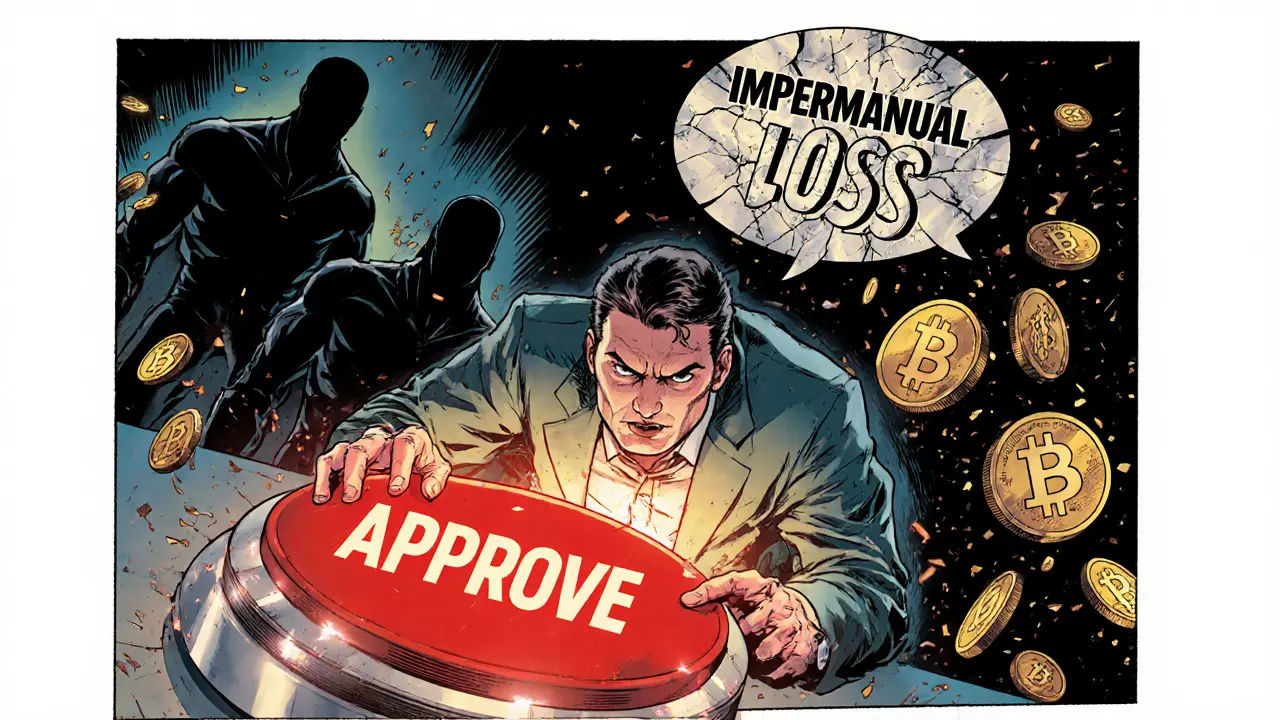
Yield Farming and Liquidity Mining
This is where Biswap v2 shines. The platform offers yield farming, where you lock up your tokens in a liquidity pool to earn rewards. For example, you can deposit BNB and BUSD into a pool, receive LP tokens in return, and stake those to earn $BSW - Biswap’s native token.
APRs (annual percentage rates) can look insane - sometimes over 100%, even 500%. But these numbers are misleading. They’re based on token emissions, not real value. If $BSW drops 50% in a week, your “100% APR” becomes a loss. Many users have lost money chasing these high yields without understanding the underlying risk.
Still, for experienced DeFi users, liquidity mining on Biswap v2 can be a smart way to earn passive income - if you know which pools are safe and which are traps.
Security and Risks
Biswap v2 doesn’t have a central team that can freeze your account or reverse a transaction. That’s good for autonomy, bad for mistakes.
Once you send funds to a smart contract, there’s no undo button. Send BNB to the wrong address? Gone. Approve a token with too much spending power? Someone could drain your wallet. No customer service will help you get it back.
There’s also no regulatory oversight. Biswap v2 isn’t registered with any financial authority. That means if the platform gets hacked, if the team disappears, or if a smart contract has a flaw - you have no legal recourse. This isn’t a flaw in the design - it’s by intent. But it’s a dealbreaker for many.
Smart contract audits are public, but they’re not foolproof. Biswap v2’s code has been reviewed by third parties, but audits don’t guarantee safety - they just reduce risk. You still need to do your own research.
Usability and Learning Curve
Biswap v2 isn’t beginner-friendly. If you’ve never used a wallet before, or don’t know what gas fees or slippage are, you’ll get lost fast. The interface is clean, but it assumes you already know how DeFi works.
Compare that to Bitvavo or Kraken - platforms with simple buy buttons, fiat on-ramps, and live chat support. Biswap v2 has none of that. You need to understand:
- How to connect your wallet
- What approval limits mean
- How to set slippage tolerance
- How to check token contracts for scams
- Why you might need to wait for a transaction to confirm
Most users spend 5-10 hours learning before they feel comfortable. For beginners, it’s overwhelming. For experienced traders, it’s just another tool.
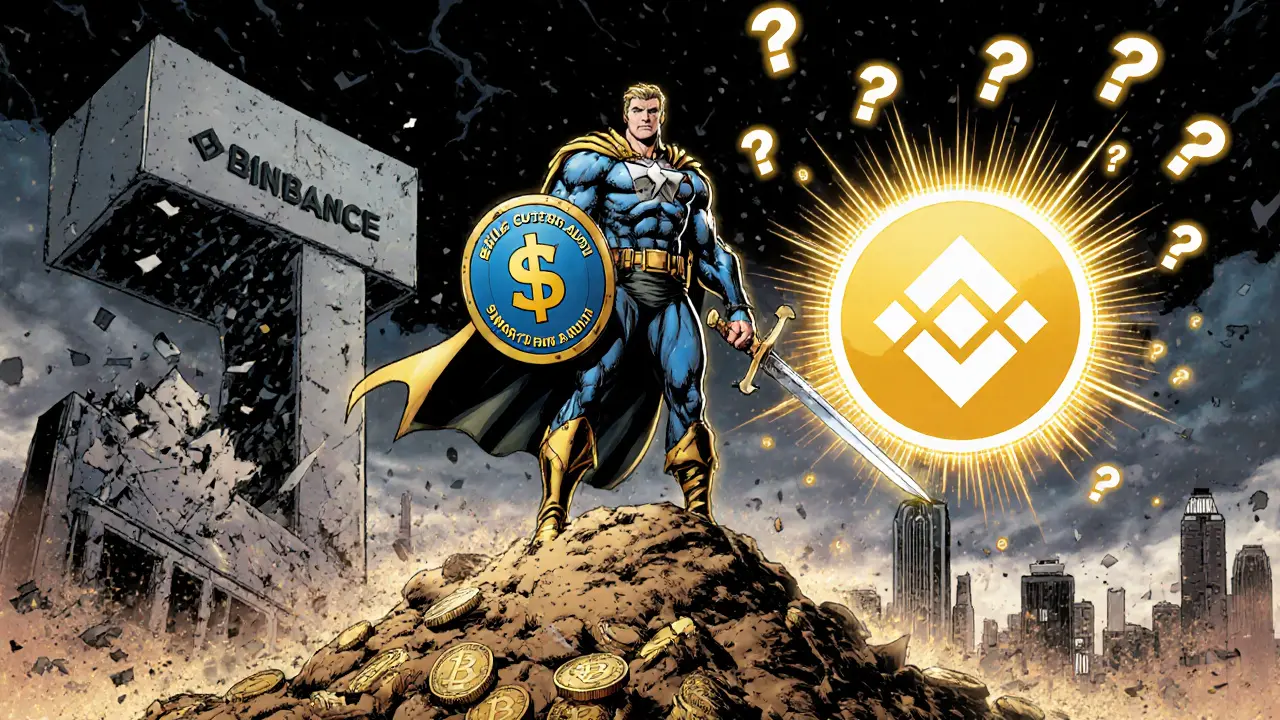
Comparison to Other Exchanges
| Feature | Biswap v2 | Uniswap (Ethereum) | PancakeSwap (BNB Chain) | Bitvavo (Centralized) |
|---|---|---|---|---|
| Type | Decentralized (DEX) | Decentralized (DEX) | Decentralized (DEX) | Centralized (CEX) |
| Blockchain | BNB Chain | Ethereum | BNB Chain | Multi-chain |
| Trading Fees | 0.25% | 0.30% | 0.10%-0.25% | 0.25%-0.35% |
| Fiat Support | No | No | No | Yes (EUR) |
| KYC Required | No | No | No | Yes |
| Customer Support | Community only | Community only | Community only | 24/7 live chat |
| Regulation | None | None | None | DNB (Netherlands) |
| Best For | DeFi users, yield farmers | Ethereum ecosystem | BNB Chain traders | Beginners, EU users |
Compared to Uniswap, Biswap v2 is faster and cheaper because BNB Chain has lower fees than Ethereum. Compared to PancakeSwap - its closest rival - Biswap v2 offers similar features but has less liquidity and fewer users. PancakeSwap dominates the BNB Chain with over 20% of DEX volume. Biswap v2 is smaller, but still active.
Bitvavo, on the other hand, is a world apart. It’s regulated, has EUR deposits, and is designed for people who want to buy crypto like they buy stocks. If you’re new or want to cash out easily, Bitvavo is safer. If you want to farm yield, swap obscure tokens, or avoid KYC, Biswap v2 is the only option.
Who Should Use Biswap v2?
Biswap v2 isn’t for everyone. Here’s who it’s actually good for:
- DeFi veterans who know how to check smart contracts and manage wallet security
- Yield farmers looking for $BSW rewards or high-APR pools
- BNB Chain users who already hold BNB, BUSD, or other tokens on that network
- Privacy-focused traders who don’t want to submit ID documents
It’s not for:
- Beginners who don’t know what a wallet is
- People who want to buy crypto with a credit card
- Those who need customer support when things go wrong
- Anyone who wants regulatory protection
Final Thoughts
Biswap v2 is a solid DEX for users who understand the risks and want to avoid centralized control. It’s fast, cheap, and deeply integrated into the BNB Chain ecosystem. But it’s not a place to park your life savings or try your first crypto trade.
The traffic numbers tell a story: around 33,000 monthly organic visits. That’s tiny compared to Uniswap’s millions, but it’s healthy for a niche DEX. The bounce rate of 41% suggests users who land there either know what they’re doing - or get scared off quickly.
If you’re comfortable with wallets, smart contracts, and the volatility of DeFi, Biswap v2 gives you freedom most exchanges can’t match. If you’re not? Stick with a regulated platform. The difference isn’t just technical - it’s about who’s responsible when things go wrong.
For now, Biswap v2 remains a tool for the self-reliant. And in crypto, that’s not a weakness - it’s the point.
Is Biswap v2 safe to use?
Biswap v2 is as safe as your own wallet security. Since it’s decentralized, there’s no central server to hack - but you’re responsible for your own actions. Smart contracts have been audited, but bugs can still exist. Never approve more than you need. Never click random links. If you lose your private key, your funds are gone forever. Use hardware wallets for large amounts.
Can I buy crypto with fiat on Biswap v2?
No. Biswap v2 only supports crypto-to-crypto trading. You can’t deposit USD, EUR, or any other fiat currency. To use it, you first need to buy crypto on a centralized exchange like Binance or Kraken, then send it to your wallet connected to Biswap v2.
Does Biswap v2 have a mobile app?
No official mobile app exists. You can access Biswap v2 through your mobile browser using a wallet like Trust Wallet or MetaMask. Many users do this daily, but the experience isn’t optimized for small screens. Always double-check transaction details on mobile - it’s easy to miss errors.
What’s the difference between Biswap v1 and v2?
Biswap v2 is a complete upgrade over v1. It introduced improved liquidity pools, lower trading fees, better slippage controls, and enhanced yield farming mechanics. v1 had higher fees and fewer token options. All users were migrated to v2 in 2022, and v1 is no longer active.
Can I lose money on Biswap v2 even if the token doesn’t crash?
Yes. This is called impermanent loss. If you provide liquidity to a token pair and one token’s price moves significantly compared to the other, you can end up with less value than if you’d just held the tokens. It’s a known risk in all DEXs, not just Biswap. Always understand this before staking your funds.
How do I get $BSW tokens?
You can earn $BSW by providing liquidity to Biswap v2 pools and staking your LP tokens. You can also buy $BSW directly on the exchange using other tokens like BNB or BUSD. Some users farm $BSW to trade for other assets or stake it in longer-term pools for extra rewards.
Is Biswap v2 better than PancakeSwap?
It depends. PancakeSwap has more liquidity, more users, and more trading pairs. Biswap v2 offers slightly lower fees and sometimes better rewards for staking. For most users, PancakeSwap is the safer default. But if you’re looking for niche pools or want to support a smaller DEX, Biswap v2 is a viable alternative.
Next steps: If you’re ready to try Biswap v2, start with a small trade. Use only what you can afford to lose. Learn how to check token contracts on BscScan. Watch YouTube tutorials on slippage and approvals. And never, ever share your seed phrase.

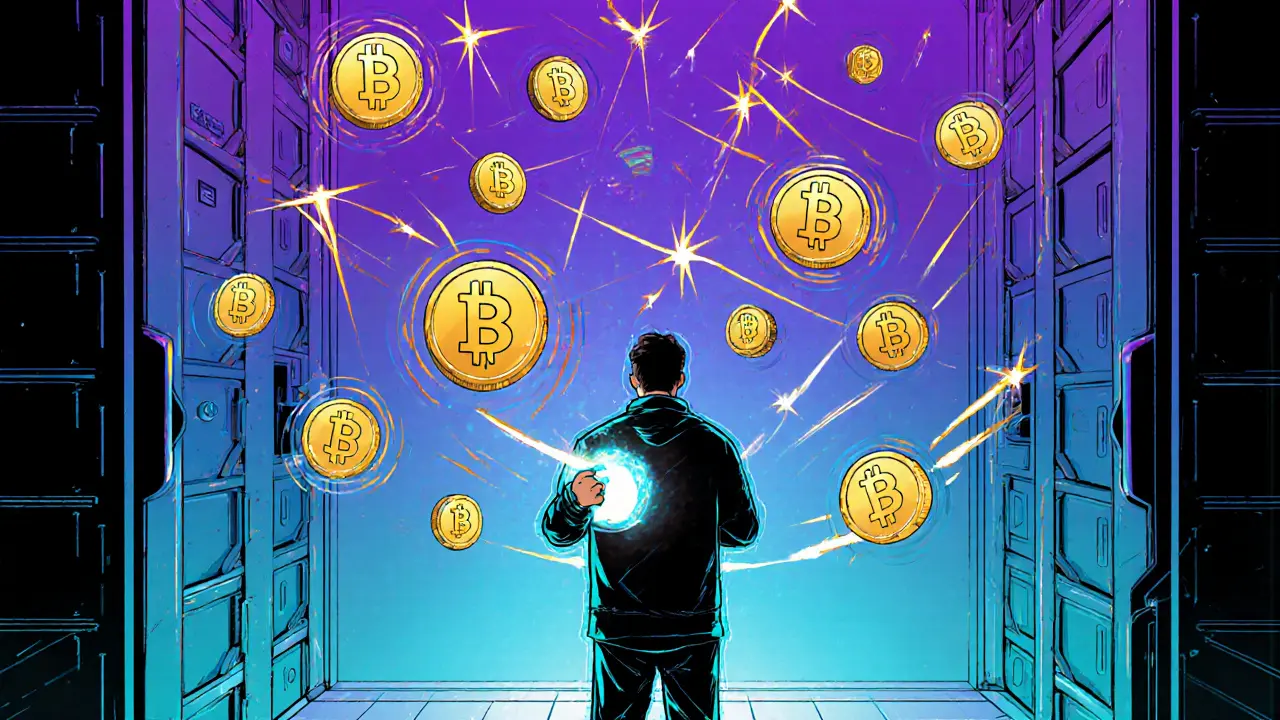

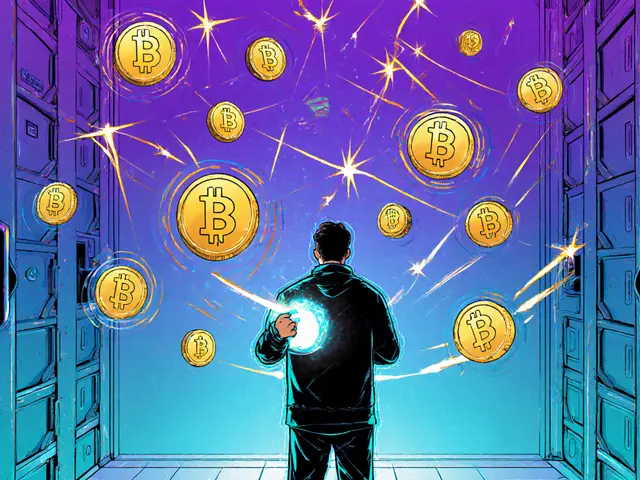

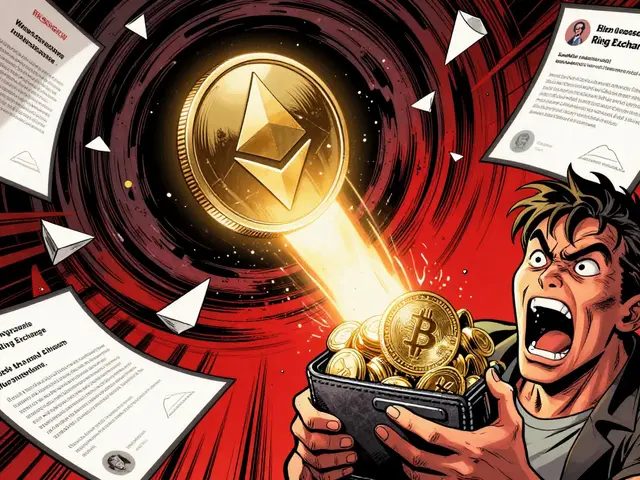
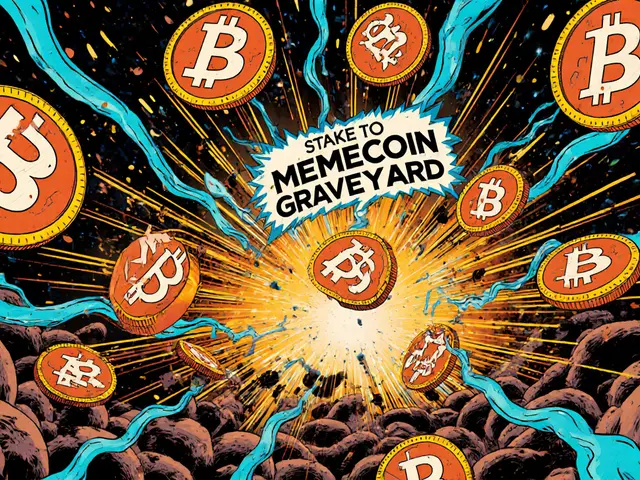


Been using Biswap v2 for about 6 months now. No KYC, no hassle. Just connect MetaMask and go. The fees are ridiculous low compared to Uniswap. I’ve swapped weird tokens I found on DEXScreener and never had a problem - as long as I check the contract on BscScan first. Always set slippage to 1.5% max. Don’t be greedy.
Also, $BSW farming? Only do it if you’re cool with volatility. I lost 40% on one pool last month, but made it back in 2 weeks. DeFi isn’t for the faint-hearted.
Just remember: if you mess up, no one’s coming to save you. That’s the trade-off.
So like… if you think about it, decentralization isn’t really about freedom, it’s about *abandonment*? Like, you’re not just trusting code, you’re trusting that no one else is smarter than you at avoiding scams? And that’s… beautiful? In a dystopian, ‘I coded this in my basement and now I’m the god of my own financial purgatory’ kind of way? I mean, sure, you can lose everything in a second, but isn’t that the point? The universe doesn’t hand out safety nets, why should crypto?
Also, typo: ‘Biswap v2 was built for DeFi users who want low fees and direct control over their assets’ - wait, is that even possible? Or is it just a fantasy we tell ourselves so we don’t feel guilty about losing our life savings to a honeypot contract? 🤔
WHEN I FIRST STARTED USING BISWAP V2 I THOUGHT I WAS A GENIUS. I WAS SWAPPING TOKENS LIKE A GOD. I WAS FARMING $BSW LIKE IT WAS OXYGEN. THEN I APPROVED A TOKEN FOR $10,000 INSTEAD OF $100. AND THEN… NOTHING. NO HELP. NO REPLY. NO HEARTBEAT FROM THE ‘COMMUNITY’.
My wallet is now a ghost town. I still check it every morning like it’s a graveyard I visit to say hi. I don’t cry anymore. I just stare. And wonder… was it worth it? Was any of this worth it?
Also, I’m still mad about the gas spike during the $PUMPKIN launch. I lost $47 in fees trying to sell $12 worth of tokens. That’s not DeFi. That’s emotional abuse.
The fundamental assumption behind Biswap v2 is that users are rational actors with perfect information. This is a myth. Human beings are not utility-maximizing machines - we are emotional, overconfident, and easily manipulated by APY numbers that look like lottery tickets. The platform doesn’t fail because it’s poorly built - it fails because it assumes users are not human.
What’s more, the absence of regulation isn’t a feature - it’s a structural vulnerability. When you remove accountability, you don’t empower users - you just shift the burden of risk onto those least equipped to bear it. The ‘you’re responsible’ argument is a moral evasion. The system is designed to extract value from ignorance. And it works - brilliantly.
Biswap v2 is fine i guess?? Like i used it once and my wallet got hacked?? But then again maybe i pasted my seed phrase in a discord DM?? Who knows?? The interface is kinda ugly but the fees are low?? I mean why do you even need support anyway??
Bro, I just want to say - when I first tried Biswap v2, I thought I was doing something revolutionary. I was like, ‘I’m free from banks!’ But then I lost $200 on a token called ‘$DOGEFIRE’ and realized… I’m just a guy in India trying to get rich by clicking buttons on a website that has no customer service. The truth? We’re all just digital peasants farming in someone else’s blockchain garden. And $BSW? It’s just digital glitter.
Also, I think I misspelled ‘slippage’ as ‘slipage’ in my last transaction. Oops.
I’ve been watching Biswap v2 for a while now. Honestly? I don’t trade much on it. I just like to lurk. See what tokens are popping. Watch the liquidity pools shift. It’s like watching a silent film where everyone’s trying to outsmart each other but no one’s really winning.
I’ve seen people make 5x returns. I’ve seen people lose everything. I’ve seen the same wallet address appear in 12 different pools over 3 days. It’s fascinating. Not because it’s smart - but because it’s so human. We’re all chasing something we don’t fully understand, hoping it’ll make us feel less small.
Also, the fact that no one gets mad when their funds vanish? That’s the real innovation.
So Biswap v2 doesn’t have a mobile app? That’s hilarious. I mean, we’re in 2025 and you’re telling me the most ‘decentralized’ platform still expects you to use a desktop browser? On a 6-inch screen? Good luck approving a token without accidentally sending your entire portfolio to a random 0x000… address.
Also, I love how the whole thing is built on ‘trust the code’ but the UI is so confusing that even the devs probably mess up. It’s like a high-tech trap with a smiley face.
And yes, I did lose $18 to a 5% slippage on $FROG. I’m not proud. But I’m not crying. Just… updating my bio to ‘professional crypto casualty’.
Hey newbies - if you’re reading this, please take a breath before you connect your wallet.
Step 1: Never approve more than you need. Always set limits. Use the ‘approve’ button like a light switch, not a sledgehammer.
Step 2: Check the token contract on BscScan. Look for ‘owner’ address. If it’s the same as the LP token address? Red flag. If the contract has no name? Red flag. If the dev’s Twitter is 1000 posts of ‘BUY NOW’? Red flag.
Step 3: Start with $5. Not $500. Not $50. $5. Learn how slippage works. Learn how to read gas fees. Learn what ‘impermanent loss’ really means.
This isn’t a casino. It’s a classroom. And you’re the student. Don’t skip the homework.
The philosophical underpinning of decentralized finance is the assertion that autonomy supersedes institutional protection. While this paradigm is intellectually compelling, its practical implementation reveals a profound asymmetry: the burden of due diligence is disproportionately borne by individuals lacking the technical literacy, resources, or psychological resilience to navigate an environment intentionally designed to obscure risk. Biswap v2, as a technical artifact, is not flawed - it is merely a mirror, reflecting the collective hubris of a generation that equates freedom with the absence of guardianship.
It is not the platform that fails. It is the expectation that users, unaided, can consistently outmaneuver predatory design. The solution is not regulation - but education. And that, unfortunately, is not built into the code.
Oh wow. Another ‘review’ that treats Biswap v2 like it’s a revolutionary breakthrough. Let me guess - you think ‘no KYC’ means ‘liberty’? No, it means ‘no accountability’. You think ‘low fees’ means ‘efficient’? No, it means ‘you’re the product’. You think ‘yield farming’ is passive income? It’s a glorified Ponzi with a smart contract.
The only thing ‘solid’ here is the fact that 90% of users lose money. The rest? They’re just waiting for the rug to be pulled. And when it happens? No one’s coming to help. Because that’s the *business model*.
Stop romanticizing chaos. It’s not DeFi. It’s financial sadism with a blockchain logo.
I’ve been on both sides of this. I lost money. I made money. I’ve cried. I’ve cheered. But here’s what I’ve learned - Biswap v2 isn’t good or bad. It’s just… a tool. Like a chainsaw. You can use it to build a cabin or accidentally cut off your leg.
The key? Don’t rush. Don’t chase 500% APRs. Don’t trust random tokens with ‘$’ in the name. Learn one thing at a time. Watch a YouTube tutorial. Read the docs. Ask questions in the Discord.
And if you mess up? It’s okay. Everyone does. Just don’t give up. You’re not dumb. You’re just new. And that’s fine.
Keep going. You’ve got this. 💪
My guy, Biswap v2 is like walking into a Lagos market where everyone’s shouting ‘BUY THIS!’ and you don’t speak the language - but you got your wallet open and your eyes wide. You see a shiny token called ‘$SILVERLION’ and the chart looks like a rocket. You click ‘swap’ and boom - your BNB is gone. But you still smile because you *felt* something. You were part of the chaos.
That’s the magic. That’s the drug. That’s why we keep coming back.
Also, I once swapped 0.05 BNB for a token called ‘$BANANA’ and it went up 1000x. I cried. I danced. I ate jollof rice like a king. That’s why I still use it. Not because it’s safe. Because it’s alive.
There is a quiet tragedy in the rise of platforms like Biswap v2. We have created a world where the most powerful financial tool in human history - the ability to exchange value without permission - is also the most dangerous. We have stripped away the safety nets of centuries - banks, regulators, lawyers - and replaced them with… a 200-line JavaScript file.
And yet, we celebrate this. We call it innovation. We call it freedom. But what we are really celebrating is our own arrogance - the belief that we can outrun consequence, that code can replace conscience, that autonomy can exist without responsibility.
The real revolution isn’t in the blockchain. It’s in the human heart - and most of us are still asleep.
Just wanted to say - if you’re new, start small. Like, $10 small. I did. I lost $8 on a fake token. I learned how to check contracts. Now I’m making steady $BSW rewards. It’s not glamorous, but it’s mine.
Also, I use the Biswap app on my phone through Trust Wallet. It’s clunky, but it works. And yes, I double-check everything. Twice. Always.
💙 You got this. And if you’re scared? That’s okay. Being scared means you’re paying attention.
Biswap v2 is fine. I use it. I lost money. I got over it. No customer support? Cool. That’s life. Stop complaining. Also, the interface is fine. You just need to read the manual. Which you didn’t.
They say ‘trust the code’ - but what if the code was written by someone who just got fired from a crypto startup? What if the audit was done by a guy who got paid in $BSW? What if the ‘community’ is just a Discord server with 3 bots and 200 fake accounts?
I used to think DeFi was the future. Now I think it’s just capitalism with better graphics. And Biswap v2? It’s the glitter on the coffin.
I’m not mad. I’m just… disappointed. Like when you find out your favorite band’s lead singer is a tax evader.
Used Biswap v2 for the first time last week. Swapped BNB for BUSD. No issues. Gas was 3 cents. UI was clean. Didn’t need help. Didn’t feel lost.
Just followed the steps. Checked the contract. Set slippage to 1%. Done.
It’s not magic. It’s not dangerous. It’s just… a tool. Like a hammer. You don’t blame the hammer if you hit your thumb. You learn to hold it right.
Why do people think Biswap v2 is risky? It’s just a DEX. If you don’t know how to use a wallet, you shouldn’t be anywhere near crypto. I’ve traded over $50,000 on Biswap. Never had a problem. Always check token contracts. Always use low slippage. Always keep 10% in BNB for gas.
Stop making it complicated. It’s not rocket science. It’s just finance. And if you’re scared? Then stay on Coinbase. But don’t pretend you understand DeFi if you don’t even know what a liquidity pool is.